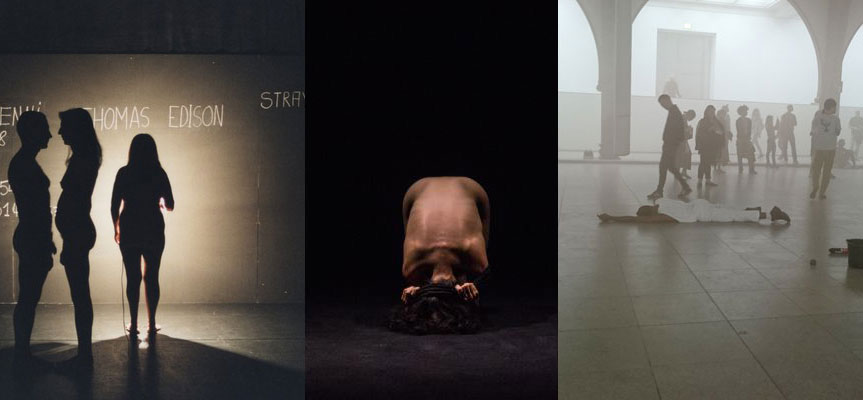
This selection is not as arbitrary as just providing a collection of pieces I saw recently. Though certainly that I have not written here in long contributes to bringing these three works together in one longer post, instead of three. It not only manifests a sort of catching up, but a different approach towards the pieces selected to write about. Some of them due to their lingering on my mind posing repeated questions of why. In this case it accounts for all three pieces for different reasons. A. Imhof’s Angst II, which as e.g. the works of C. Spooner stand out as ‘operas’ in the field of arts, attracts attention as a crossover from the visual arts to theatrical forms. At least this is how Imhof defines her work and thus constitutes points of interest for my observation that dance already started to incorporate more and more elements from artistic performances in the last years. So do these claims for opera (C. Spooner – singing, A. Imhof – dancing, silent track opera) now mark a viceversa direction or is it just a development of artistic performance practice, which always has been an experimental field.
Main points though for bringing these three pieces in relation are other factors, in this case time and body. Both certainly are essential for any performative event, however in each of the pieces – J. Bel’s Jerome Bel, I. Schad’s Solo for Lea and A. Imhof’s Angst II – they are used rather differently and set parameters that allow to distinguish between them. Aside that all three operate in and through physical language. Further unifying elements are de/construction, a will of exceeding the format while at the same time staying within the given frame. While Bel and Schad question the material through explorations that are partly uncomfortable to watch, in other cases that can also be simply uneventful ( also Bel, Imhof).
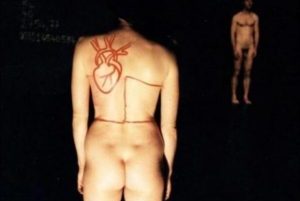
The body in its de/formations is also essential for the Schad / Moro collaboration of Solo for Lea (german review). At first sight the work does not seem to question the aesthetics of the body. Displaying a white young female corpse in an all over black staging, which through acts of repetition and acceleration explores the mechanics and shapes of ab/normalities the human body can express. Alienation as method to explore the human body is a task reminding Spinoza’s statement that we do not know what a body can do. Schad and Moro manage to create/find images that are not yet are connoted with the human, or if so in a rather abject way. These forms more likely remind organical designed shapes and their possible bionic movements. These are bodily animation that at once seem to imitate and to exceed the abilities we associate with human and other lively forms, proposing shapes to come rather than depicting possibilities of the existing. 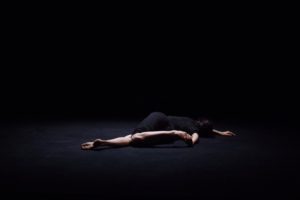
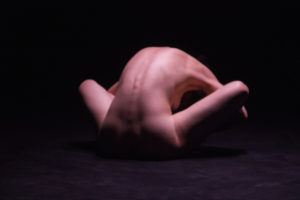
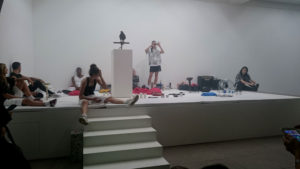
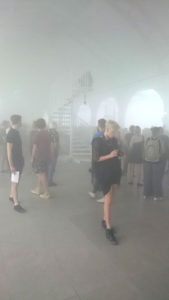
Angst II has no explicit connotation, no traumatic reminder. It evaporates like the dry artificial fog, that does not crawl into the bones with a creepy wet heaviness. Angst II though creates the blurry illusion of communicating in and through a big space. In fact each one walks alone, the performers cross the audience paths with starring gazes, group action emerges without obvious reason from either side. People rush to catch a glimpse of the next gesture – social media in 3D. Communication happens outside on the museums stairs beyond the stars of the mild September nights.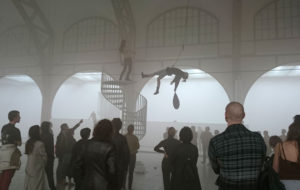
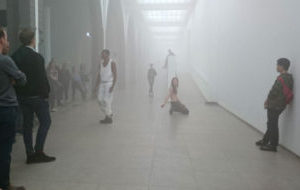
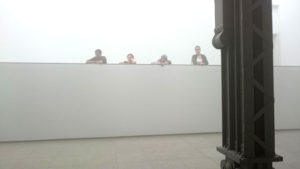
Angst II worked as a playground in a hall that is not easy to play with. The event had an unforeseen attraction that did not emerge from any spectacular movement. Not from fears for the tightrope walkers, nor incited from nowhere leading stairs. A performer pressing the body against the wall, burning cigarettes in her hand, others dancing across the ground floor, three further actors group as changing still images near the left staircase. I keep reading that Imhof’s pieces work through the creation of images, but what else did performance ever do then to create a momentary ever again overwritten layer of images. 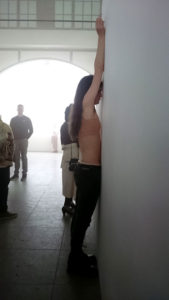
The strongest point in Imhof’s work is the directed non-directedness (if that makes sense) that leads to an immersion of the beholder without conscious confirmation. It is like part taking in social media, a form of communication, which at the same time refuses to exchange other through the bodily presence of the format. Better than any forceful integration of an audience – at least in the Hamburger Bahnhof’ Angst II – the audience not became, but always was part of the event. The performance was not based on an understanding of what was going on, but on an interaction that integrated the visitors not participatory, but as passers-by, who provided the backdrop and mediated what is going by their appearance. Not as individuals and not as collective, but as a crowd that wanted to be part of what is happening without knowing what that is. In this regard the piece, despite its bored nightclub behavior, emerged as the very moment in time, as a communication not exchanging classified content, but as one longing for physical presence … 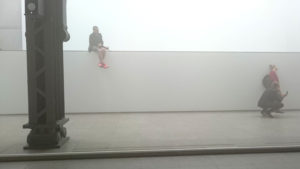
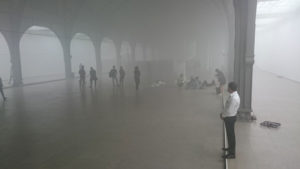
Update June 2017: An interesting article on Anne Imhof’s ‘Angst’ piece has been recently been published by Texte zur Kunst > read here.
